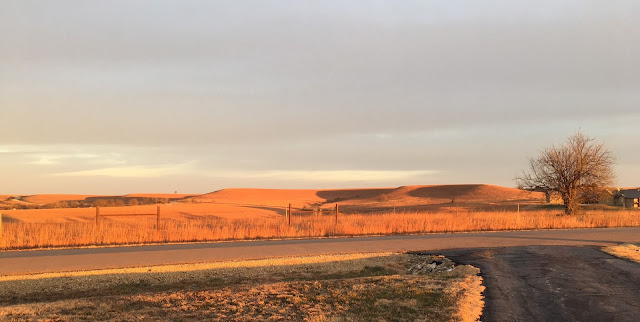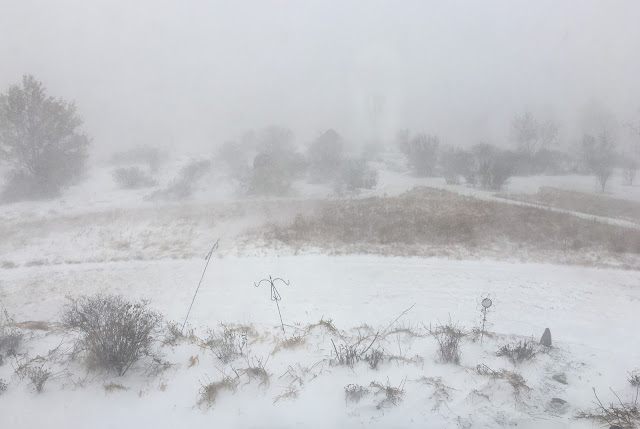 Weather report: High 55ºF, blustery, overcast with the look of winter coming back. However, ProfessorRoush just doesn't care. He's back from a relatively short vacation and, while it may not be a great day to kneel on the wet and cold ground to clear the winter debris from beds, there are still things that can be done. Done if the will to garden is strong enough and the gardener's soul has enough fortitude.
Weather report: High 55ºF, blustery, overcast with the look of winter coming back. However, ProfessorRoush just doesn't care. He's back from a relatively short vacation and, while it may not be a great day to kneel on the wet and cold ground to clear the winter debris from beds, there are still things that can be done. Done if the will to garden is strong enough and the gardener's soul has enough fortitude. And besides, I have a Dutch crocus blooming! And Scilla!!! One single crocus so far but I'm sure that more will come soon. In my records going back to 2005, I don't specifically note the first Dutch crocus every year, but in only one year, 2014, was my note of the first crocus later (3/25/14) than this date. In 2006 and 2012, I saw these blooming on 3/6 and 3/8 respectively. So, right now, I'd estimate spring at around 2 weeks later than normal.
And besides, I have a Dutch crocus blooming! And Scilla!!! One single crocus so far but I'm sure that more will come soon. In my records going back to 2005, I don't specifically note the first Dutch crocus every year, but in only one year, 2014, was my note of the first crocus later (3/25/14) than this date. In 2006 and 2012, I saw these blooming on 3/6 and 3/8 respectively. So, right now, I'd estimate spring at around 2 weeks later than normal. If crocus and scilla are the first signs of life in my garden this year, they are not alone. Today, as you can see from the pictures posted here and below, early peony buds are breaking ground, and the ornamental Alliums are up and healthy. I must get the Alliums protected from the deer soon!
If crocus and scilla are the first signs of life in my garden this year, they are not alone. Today, as you can see from the pictures posted here and below, early peony buds are breaking ground, and the ornamental Alliums are up and healthy. I must get the Alliums protected from the deer soon!I can already see that there are one or two minor drawbacks of my plan to post more often so that you can experience my garden activities with me each time I garden: some of the posts are going to be long! And the photos will be smaller to account for space concerns, but if you click on them, you'll be able to see the detail you desire. Today, I spent about 4 useful hours total in the garden. And what did I accomplish?
I started by planning to mow down my "rain beds" of prairie grass near the house so that they will green up faster and allow some extra sun to the early prairie forbs. Mowing, however, was a longer chore than I anticipated as I started with a "surprise" flat rear tire on the tractor that had to be fixed first. You can see Bella, above, running in the taller grass, but here is a photo of the back yard before mowing:
And after: Already I feel better! One spring chore off my checklist!
 Then, I moved on to clear debris from the asparagus bed and weed it. I'm sorry, I didn't think to take a picture until I was halfway through clearing, but the photo at the left will give you an idea of what it looked like when I started.
Then, I moved on to clear debris from the asparagus bed and weed it. I'm sorry, I didn't think to take a picture until I was halfway through clearing, but the photo at the left will give you an idea of what it looked like when I started.
And the photo at the right will show you where I finished; the asparagus bed is mulched with around 2 inches of aged straw that sat out all winter. That should help suppress the weeds! The next green things I should see in this bed are some delicious asparagus spears rising above the golden straw.
Other than the usual puttering around that includes picking up the occasional down limb or blown-in-city-trash, my last major accomplishment of the day was in keeping with my goal to garden smarter this year. For the benefit of others who have the same problem, this is my solution to "pole-migration" in my shade-house over the strawberries. You see, my shade house is on a slight slope from front to back. I've noticed over the last couple of years that the long poles that run on each side, and to which the canopy is stretched, have a tendency to slowly slip from their sleeves out the lower side, extending sometimes past the electric fence and out of the garden. Up until now, some occasional pounding with a hammer every few months would shift them back into place. I noticed today, however, that one pole was very very far (as in 8 feet or so) out of the canopy sleeve, leaving it in grave danger of ripping off in the next wind. So, I got a length of good old, stiff #9 baling wire, made a hook in one end to place into the pole, and then wound it around the upright so the pole...hopefully...won't be able to migrate. A minor brain-storm to fix a now-minor but potentially major problem. Let's hope it works.
Sorry about the long post, but it was a good few hours in the garden today! I'll leave you with the promise of these deliciously burgundy-colored herbaceous peony buds, just breaking ground.















































